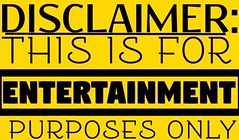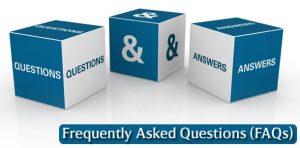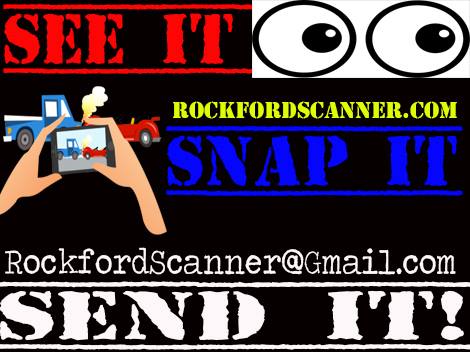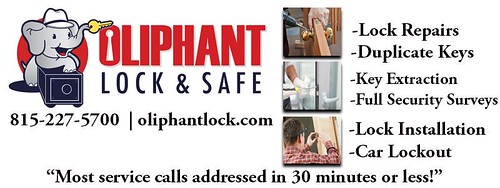
Rockford Scanner:

CLICK HERE TO SUPPORT OUR WORK!
Thank you in advance for your donation!
FCC has been in town and caught another person jamming the airwaves.
Read it in full: https://docs.fcc.gov/public/attachments/DA-23-448A1.pdf
Federal Communications Commission DA 23-448
Before the
Federal Communications Commission
Washington, D.C. 20554
In the Matter of
Jayme John Leon
Rockford, Illinois
)
File No.: EB-FIELDNER-22-00033739
NAL/Acct. No.: 202332010002
FRN: 0033765348
NOTICE OF APPARENT LIABILITY FOR FORFEITURE
Adopted: May 30, 2023 Released: May 30, 2023
By the Chief, Enforcement Bureau:
I. INTRODUCTION
1. We propose a penalty of $25,000.00 against Jayme John Leon (Leon), the owner and
operator of a Citizens Band Radio Service (CB) station in Rockford, Illinois, for apparently engaging in
unauthorized operation in violation of section 301 of the Communications Act of 1934, as amended (Act)
and sections 95.933 and 95.957 of the Commission’s rules. The Commission’s rules authorize the
operation of CB stations without the grant of individual licenses, conditioned on compliance with all
applicable regulations. Subject to limited exceptions not applicable in this case, the Commission’s rules
generally prohibit using CB stations for one-way verbal communications, limit conversations to five
minutes in length, and prohibit the transmission of music, sound effects, etc. Leon apparently violated the
Act and the Commission’s rules by using his CB station to make one-way transmissions and to send
nonverbal, indecipherable sound effects over long periods, thereby voiding his operating authority. Leon
also apparently caused willful or malicious interference in violation section 333 of the Act. Such illegal
operations pose a danger to the public because they can disrupt authorized CB uses, such as travelers’
assistance, warnings of hazardous road conditions, reporting accidents, etc. Moreover, CB may be used
by public service providers and first responders during natural disasters when other infrastructure is
damaged or nonexistent.
II. BACKGROUND
A. Legal Framework
2. Section 301 of the Act provides: “No person shall use or operate any apparatus for the
transmission of energy or communications or signals by radio . . . except under and in accordance with
. . . a license in that behalf granted under the provisions of this Act.”1
Section 307(e)(1) of the Act
provides that “the Commission may by rule authorize the operation of radio stations without individual
licenses in” certain services, including CB.2
Section 95.305 of the Commission’s rules authorizes the
operation of CB stations without individual licenses, provided that “[s]uch operation must comply with all
applicable rules.”3
Section 95.905 of the rules provides: “A person’s authorization to operate a [CB]
station without an individual license pursuant to § 95.305 is voided if that person violates any [applicable]
operating rules.”4
1
47 U.S.C. § 301.
2
Id. § 307(e)(1).
3
47 CFR § 95.305 (emphasis added).
4
Id. § 95.905.
Federal Communications Commission DA 23-448
2
3. Section 95.931 of the Commission’s rules states: “The operator of a [CB] station may use
that station for two-way plain language voice communications to other [CB] stations.”5
Certain specific
uses are expressly prohibited by sections 95.933 and 95.957 of the rules, including: (a) one-way
transmissions,6
(b) transmitting “music, whistling, sound effects or any other audio material to amuse or
entertain,”7
(c) transmitting “any sound effects solely to attract attention,”8
and (d) transmission more than
five minutes in duration.9
The use of a CB station in violation of any of these restrictions or any other
applicable rule invalidates authorization to operate by rule pursuant to section 95.305, making such
transmissions a violation of section 301 of the Act.10
B. Factual Background
4. Between December 2021 and June 2022, the Commission received complaints from several
CB users in the Rockford, Illinois, area alleging that someone (whom some of the complainants believed to
be Leon) had been making multiple one-way transmissions for extended periods of time, including recorded
comedy routines, air raid siren sounds, and digital noises. An FCC field agent travelled to Rockford,
Illinois, to investigate. On June 21, 2022, at approximately 5:00 p.m. the agent observed a continuous data
transmission on CB channel 39.11 The signal was unintelligible, data-like noise.12 The transmission
continued for over 30 minutes, during which time other users were unable to access the channel. Using
direction finding techniques the agent traced the source of the transmissions to an antenna mounted on a
house at 2212 Rio Vista Court in Rockford, Illinois.13 The agent observed a 2006 Honda Accord with
Illinois tags parked in the driveway at this location. Vehicle registration records show that Leon is the
owner of the automobile and gives 2212 Rio Vista Court as his address. The agent left an on-scene Notice
5
Id. § 95.931.
6
Id. § 95.933(a). There are a few limited exceptions allowing for one-way transmission, none of which is applicable
to this case. See id. § 95.931(b).
7
Id. § 95.933(e).
8
Id. § 95.933(f).
9
In all Personal Radio Services, including CB, the operator “must generally limit transmissions to the minimum
duration necessary,” and follow any “specific duration limits prescribed for particular services. Id. § 95.357.
The duration of individual CB transmissions is limited “to no more than five minutes,” unless the operator is
“directly participating in emergency communications” or “assist[ing] a traveler.” Id. § 95.957.
10 Tommie Salter, Forfeiture Order, 19 FCC Rcd 24746, 24748, para. 6 (EB 2004) (“Because Mr. Salter operated his
CB station in a manner inconsistent with the Rules, he was not authorized pursuant to . . . [a previous version of
section 95.305] to operate his CB station.”).
11 Forty channels between 26.965 MHz and 27.495 MHz are allocated for CB communications. CB Channel 39 is
27.395 MHz. 47 CFR § 95.963.
12 “The operator of a CBRS station may use that station to transmit two-way plain language voice communications
to other CB stations.” Id. § 95.931. Prohibited uses include the transmission of “whistling, sound effects or any
other audio material,” and “sound effects solely to attract attention.” Id. § 95.933(f)-(g).
13 The house is owned by 2212 Rio Vista LLC. See Parcel Details for Parcel No. 11-13-227-008 (Supervisor of
Assessments records of tax year 2022) (copy on file in EB-FIELDNER-22-00033739). Julie A. Leon Cox of Jasper,
Georgia, and Michael A. Leon of Sherman Oaks, California. See Illinois Secretary of State LLC File Detail Report,
File No. 11019838 (copy on file in EB-FIELDNER-22-00033739). Julie Cox and Michael Leon are siblings of Jayme
Leon, as indicated in the obituary for Peggy A. Leon, their mother, published by the Rockford Register Star on
December 20, 2020, https://www.legacy.com/us/obituaries/rrstar/name/peggy-leon-obituary?id=9357889 (last visited
on May 1, 2023) (copy on file in EB-FIELDNER-22-00033739). These familial connections and the presence of his
vehicle parked at the property shows that this is Leon’s residence. Moreover, Leon confirmed that is his address and
acknowledged receipt of the NOUO sent to him at this address during the telephone conversation with the
Enforcement Bureau’s Regional Director described, infra, at paragraph 5.
Federal Communications Commission DA 23-448
3
of Interference to Authorized Radio Stations on the windshield of the car.14 Leon did not respond to this
notice.
5. On September 20, 2022, the Commission mailed a Notice of Unlicensed Operation
(NOUO) to Leon, advising him, inter alia, that violations observed on June 21, 2022, voided his
authorization to operate a CB station, rendering his transmissions unauthorized and in violation of section
301 of the Act, potentially subjecting him to severe penalties.15 On September 28, 2022, Leon telephoned
the Regional Director for Region One of the Enforcement Bureau (Bureau). Leon denied the allegations,
but stated that someone had placed a milk crate containing a battery-operated transmitter at a corner near
his house, and that he had found similar items on prior occasions. The Regional Director advised him to
submit this information in writing along with any photographic or other documentation. Mr. Leon
promised to send a written response to the NOUO, but he has not done so, nor has he provided any
information or documentation corroborating the alleged milk crate device.
6. On October 21, 2022, the field agent returned to Rockford, Illinois, to conduct further
investigation. At approximately 12:51 p.m., the field agent observed a continuous signal of unintelligible,
data-like noise on CB channel 39. Using direction finding techniques the agent tracked the source of the
signal to the Rio Vista Court residence. The readings were consistent with those the agent had observed
on June 21, 2022. The transmission ceased as the agent drove past the house. The agent did not notice
any milk crate or other sort of box on any street corner near the residence.
7. Leon has a history of noncompliance with Commission regulations. On January 19,
1999, the Commission’s former Consumer and Information Bureau released a Forfeiture Order
16
imposing a $14,000 monetary penalty against Leon for the transmission of “obscene, indecent or profane
words, language or meaning,” and for failure to “make [his] station and records available for inspection,”
both violations of the Commission’s CB rules.17 Leon did not respond to the Forfeiture Order, nor pay
the forfeiture amount. Subsequently, on March 1, 2011, the Enforcement Bureau issued a Notice of
Violation to Leon, stating that a Bureau agent monitored continuously transmitting music and sound
effects from a CB station installed in a U-Haul vehicle, i.e., the same type of behavior at issue in this case,
in violation of the rules then in effect prohibiting obscene, indecent or profane language, sections
95.413(a)(2) and 95.426(a) of the rules then in effect.18
III. DISCUSSION
A. Leon is Apparently Liable for Violating Sections 301 and 333 of the Act
and Sections 95.933 and 95.957 of the Commission’s rules.
8. We find that Leon apparently willfully and repeatedly violated section 301 of the Act and
sections 95.933 and 95.957 of the Commission’s rules. Although section 95.305 authorizes the operation
of CB stations without the grant of individual licenses, section 95.905 of the rules provides that such
operating authority is automatically voided by the violation of any of the applicable rules. On June 21,
2022, Leon apparently violated sections 95.933 and 95.957 of the Commission’s rules by using his station
to make a 30 minute one-way transmission comprised of nonverbal, indecipherable sound effects.19 On
September 28, 2022, Leon claimed the source of the unauthorized transmissions was a milk crate
containing a battery-operated CB radio placed by an unidentified third-party at a corner near his house,
14 Notice of Interference to Authorized Radio Stations issued to Jayme John Leon (June 21, 2022; copy on file in EBFIELDNER-22-00033739).
15 Notice of Unlicensed Operation, issued to Jayme John Leon (Columbia Regional Office; Sept. 20, 2022).
16 Jayme John Leon, Forfeiture Order, 14 FCC Rcd 858 (CIB 1999).
17 47 CFR §§ 95.413(a)(2) (codified at that time as 47 CFR § 95.413(a)(2) (1998)), 95.426(a) (codified at that time
as 47 CFR § 95.426(a) (1998)).
18 Jayme John Leon, Notice of Violation, File No. EB-11-PO-0004 (Mar. 1, 2011); see supra note 17.
19 47 CFR § 95.933(a), (e); 47 CFR § 95.957.
Federal Communications Commission DA 23-448
4
and that he had found similar items on two prior occasions. Leon, however, failed to provide any
evidence of the alleged milk crate device. Subsequently, Leon again engaged in the same type of
apparent unlicensed operation on October 21, 2022. In both instances, evidence collected by an agent
show the source of the signals was the antenna mounted on the Rio Vista Court residence, not a nearby
street corner.
9. We also find that Leon apparently repeatedly engaged in willful or malicious interference
in violation of section 333 of the Act.20 Transmitting a signal in order to preclude the authorized used of
the frequency by a third party is a violation constitutes willful or malicious interference.21 The Bureau
has found that behavior very similar to that described here, namely, playing loud music and making
animal noises to obstruct the use of the frequency by other users constitutes a violation of section 333.22
The legislative history also shows that CB is within of scope of section 333.23
B. Proposed Forfeiture
10. Section 503(b) of the Act authorizes the Commission to impose a forfeiture against any
entity that “willfully or repeatedly fail[s] to comply with any of the provisions of [the Act] or of any rule,
regulation, or order issued by the Commission[.]”24 Here, section 503(b)(2)(D) of the Act authorizes us to
assess a forfeiture against Leon of up to $23,727 for each violation or each day of a continuing violation,
up to a statutory maximum of $177,951 for a single act or failure to act.25 In exercising our forfeiture
authority, we must consider the “nature, circumstances, extent, and gravity of the violation and, with
respect to the violator, the degree of culpability, any history of prior offenses, ability to pay, and such
other matters as justice may require.”26 In addition, the Commission has established forfeiture guidelines;
they establish base penalties for certain violations and identify criteria that we consider when determining
the appropriate penalty in any given case.27 Under these guidelines, we may adjust a forfeiture upward
for violations that are egregious, intentional, or repeated, or that cause substantial harm or generate
substantial economic gain for the violator.28
11. Section 1.80(b) of the Commission’s rules sets a base forfeiture, for each violation or
each day of a continuing violation, of $10,000 for unauthorized operation and of $7,000 for interference.29
The Bureau has determined that Leon operated without authorization and engaged in willful or malicious
interference on June 21, 2022 and October 21 2022. In light of these apparent findings, given the
20 See 47 U.S.C. § 333.
21 Kevin W. Bondy, Forfeiture Order, 26 FCC Rcd 7840, 7841, 7845 (EB 2011).
22 Michael Guernsey, Forfeiture Order, 30 FCC Rcd 7354, 7356 (EB 2015).
23 Section 333 was added to the Act in 1990, providing an explicit statutory prohibition on willful or malicious
interference thereby enhancing and facilitating the Commission’s efforts to address and remedy interference cases.
In their reports on the legislation, both houses of Congress specifically cited citizens band radio as one of the
services affected. H.R. Rep. No. 101-316 at 8 (Oct. 27, 1989); S. Rep. 101-215 at 7 (Nov. 19, 1989).
24 47 U.S.C. § 503(b).
25 See id. § 503(b)(2)(D); 47 CFR § 1.80(b)(9). See Amendment of Section 1.80(b) of the Commission’s Rules,
Adjustment of Civil Monetary Penalties to Reflect Inflation, Order, DA-22-1356, 2022 WL 18023008 at *6 (EB Dec.
23, 2023); see also Annual Adjustment of Civil Monetary Penalties to Reflect Inflation, 88 Fed. Reg. 783 (Jan. 5,
2023) (setting January 15, 2023 as the effective date for the increases).
26 47 U.S.C. § 503(b)(2)(E).
27 47 CFR § 1.80(b)(10), Note 2 to para. (b)(10).
28 Id.
29 47 CFR § 1.80(b), Table 1. For purposes of the forfeiture calculations, we consider the violations of sections
95.933 and 95.957 of the Commission’s rules to be subsumed within the violation of section 301 of the Act in that
they trigger the voiding of any operating authority otherwise conferred by section 95.003 of the Commission’s rules.
Federal Communications Commission DA 23-448
5
particular facts of this case, and consistent with the Forfeiture Policy Statement,
30 we conclude that a
monetary forfeiture of $25,000 is warranted.31 In applying the applicable statutory factors, we also
consider whether there is any basis for an upward or downward adjustment of the proposed forfeiture.
Based on the facts of this case, we find none.
IV. CONCLUSION
12. Accordingly, after applying the Forfeiture Policy Statement, section 1.80 of the
Commission’s rules, and the statutory factors, we have determined that Leon apparently willfully and
repeatedly violated sections 301 and 333 of the Act and sections 95.933 and 95.957 of the Commission’s
rules. As such, Leon is apparently liable for a forfeiture of $25,000.32
V. ORDERING CLAUSES
13. Accordingly, IT IS ORDERED that, pursuant to section 503(b) of the Act, 47 U.S.C. §
503(b), and section 1.80 of the Commission’s rules, 47 CFR § 1.80, Jayme John Leon is hereby
NOTIFIED of this APPARENT LIABILITY FOR A FORFEITURE in the amount of Twenty-Five
Thousand Dollars ($25,000) for willful and repeated violations of sections 301 and 303 of the Act, 47
U.S.C. §§ 301 and 333, and sections 95.933 and 95.957 of the Commission’s rules, 47 CFR 95.933 and
95.957.
14. IT IS FURTHER ORDERED that, pursuant to section 1.80 of the Commission’s rules,
47 CFR § 1.80 within thirty (30) calendar days of the release date of this Notice of Apparent Liability for
Forfeiture, Jayme John Leon SHALL PAY the full amount of the proposed forfeiture or SHALL FILE a
written statement seeking reduction or cancellation of the proposed forfeiture consistent with paragraph
17 below.
15. In order for Jayme John Leon to pay the proposed forfeiture, Jayme John Leon shall
notify the Office of the Field Director at field@fcc.gov his intent to pay, whereupon an invoice will be
posted in the Commission’s Registration System (CORES) at https://apps.fcc.gov/cores/userLogin.do.
Upon payment, Jayme John Leon shall send electronic notification of payment to the Office of the Field
Director, Enforcement Bureau, Federal Communications Commission, at on the date said payment is
made. Payment of the forfeiture must be made by credit card using CORES at
https://apps.fcc.gov/cores/userLogin.do, ACH (Automated Clearing House) debit from a bank account, or
by wire transfer from a bank account. The Commission no longer accepts forfeiture payments by check
or money order. Below are instructions that payors should follow based on the form of payment
selected:33
• Payment by wire transfer must be made to ABA Number 021030004, receiving bank
TREAS/NYC, and Account Number 27000001. In the OBI field, enter the FRN(s) captioned
above and the letters “FORF”. In addition, a completed Form 15934 or printed CORES form35
30 See The Commission’s Forfeiture Policy Statement and Amendment of Section 1.80 of the Rules to Incorporate the
Forfeiture Guidelines, Report and Order, 12 FCC Rcd 17087,17101, para. 27 (1997) (Forfeiture Policy Statement),
recons. denied, Memorandum Opinion and Order, 15 FCC Rcd 303 (1999).
31 The maximum fine the Bureau can propose pursuant to its delegated authority against a non-common carrier is
$25,000. 47 CFR § 0.311(a)(4).
32 Any entity that is a “Small Business Concern” as defined in the Small Business Act (Pub. L. 85-536, as amended)
may avail itself of rights set forth in that Act, including rights set forth in 15 U.S.C. § 657, “Oversight of Regulatory
Enforcement,” in addition to other rights set forth herein.
33 For questions regarding payment procedures, please contact the Financial Operations Group Help Desk by phone
at 1-877-480-3201 (option #1).
34 FCC Form 159 is accessible at https://www.fcc.gov/licensing-databases/fees/fcc-remittance-advice-form-159.
35 Information completed using the Commission’s Registration System (CORES) does not require the submission of
an FCC Form 159. CORES is accessible at https://apps.fcc.gov/cores/userLogin.do.
Federal Communications Commission DA 23-448
6
must be faxed to the Federal Communications Commission at 202-418-2843 or e-mailed to
RROGWireFaxes@fcc.gov on the same business day the wire transfer is initiated. Failure to
provide all required information in Form 159 or CORES may result in payment not being
recognized as having been received. When completing FCC Form 159 or CORES, enter the
Account Number in block number 23A (call sign/other ID), enter the letters “FORF” in block
number 24A (payment type code), and enter in block number 11 the FRN(s) captioned above
(Payor FRN).36 For additional detail and wire transfer instructions, go to
https://www.fcc.gov/licensing-databases/fees/wire-transfer.
• Payment by credit card must be made by using CORES at
https://apps.fcc.gov/cores/userLogin.do. To pay by credit card, log-in using the FCC Username
associated to the FRN captioned above. If payment must be split across FRNs, complete this
process for each FRN. Next, select “Manage Existing FRNs | FRN Financial | Bills & Fees” from
the CORES Menu, then select FRN Financial and the view/make payments option next to the
FRN. Select the “Open Bills” tab and find the bill number associated with the NAL Acct. No.
The bill number is the NAL Acct. No. with the first two digits excluded (e.g., NAL 1912345678
would be associated with FCC Bill Number 12345678). After selecting the bill for payment,
choose the “Pay by Credit Card” option. Please note that there is a $24,999.99 limit on credit
card transactions.
• Payment by ACH must be made by using CORES at https://apps.fcc.gov/cores/userLogin.do. To
pay by ACH, log in using the FCC Username associated to the FRN captioned above. If payment
must be split across FRNs, complete this process for each FRN. Next, select “Manage Existing
FRNs | FRN Financial | Bills & Fees” on the CORES Menu, then select FRN Financial and the
view/make payments option next to the FRN. Select the “Open Bills” tab and find the bill
number associated with the NAL Acct. No. The bill number is the NAL Acct. No. with the first
two digits excluded (e.g., NAL 1912345678 would be associated with FCC Bill Number
12345678). Finally, choose the “Pay from Bank Account” option. Please contact the appropriate
financial institution to confirm the correct Routing Number and the correct account number from
which payment will be made and verify with that financial institution that the designated account
has authorization to accept ACH transactions.
16. Any request for making full payment over time under an installment plan should be sent
to: Chief Financial Officer—Financial Operations, Federal Communications Commission, 45 L Street,
NE, Washington, D.C. 20554.37 Questions regarding payment procedures should be directed to the
Financial Operations Group Help Desk by phone, 1-877-480-3201, or by e-mail,
ARINQUIRIES@fcc.gov.
17. The written statement seeking reduction or cancellation of the proposed forfeiture, if any,
must include a detailed factual statement supported by appropriate documentation and affidavits pursuant
to sections 1.16 and 1.80(f)(3) of the Commission’s rules.38 The written statement must be mailed to the
Office of the Secretary, Federal Communications Commission, 45 L Street, NE, Washington, D.C. 20554,
ATTN: Enforcement Bureau – Office of the Field Director, and must include the NAL/Account Number
referenced in the caption. The statement must also be e-mailed to Office of the Field Director at
mailto:field@fcc.gov.
18. The Commission will not consider reducing or canceling a forfeiture in response to a
claim of inability to pay unless the petitioner submits the following documentation: (1) federal tax returns
for the past three years; (2) financial statements for the past three years prepared according to generally
accepted accounting practices; or (3) some other reliable and objective documentation that accurately
36 Instructions for completing the form may be obtained at http://www.fcc.gov/Forms/Form159/159.pdf.
37 See 47 CFR § 1.1914.
38 Id. §§ 1.16, 1.80(g)(3).
Federal Communications Commission DA 23-448
7
reflects the petitioner’s current financial status.39 Any claim of inability to pay must specifically identify
the basis for the claim by reference to the financial documentation. Inability to pay, however, is only one
of several factors that the Commission will consider in determining the appropriate forfeiture, and we
retain the discretion to decline reducing or canceling the forfeiture if other prongs of 47 U.S.C.
§ 503(b)(2)(E) support that result.40
19. IT IS FURTHER ORDERED that a copy of this Notice of Apparent Liability for
Forfeiture shall be sent by first class mail and certified mail, return receipt requested, to Jayme John Leon,
2212 Rio Vista Court, Rockford, Illinois 61107-1027.
FEDERAL COMMUNICATIONS COMMISSION
Loyaan A. Egal
Chief
Enforcement Bureau
39 47 U.S.C. § 503(b)(2)(E).
40 See, e.g., Ocean Adrian Hinson, Surry County, North Carolina, Forfeiture Order, 34 FCC Rcd 7619, 7621, para. 9
& n.21 (2019); Vearl Pennington and Michael Williamson, Forfeiture Order, 34 FCC Rcd 770, paras. 18-21 (2019);
Fabrice Polynice, Harold Sido and Veronise Sido, North Miami, Florida, Forfeiture Order, 33 FCC Rcd 6852,
6860-62, paras. 21-25 (2018); Adrian Abramovich, Marketing Strategy Leaders, Inc., and Marketing Leaders, Inc.,
Forfeiture Order, 33 FCC Rcd 4663, 4678-79, paras. 44-45 (2018); Purple Communications, Inc., Forfeiture Order,
30 FCC Rcd 14892, 14903-904, paras. 32-33 (2015); TV Max, Inc., et al., Forfeiture Order, 29 FCC Rcd 8648, 8661,
para. 25 (2014).

SUPPORT ROCKFORD SCANNER
Thank you in advance for your donation!
See it, Snap it, Send it
SEE IT: See a scene or something of interest
SNAP IT: Pull our your camera and film
SEND IT: RockfordScanner@Gmail.com
Checkout one of the best
Police scanner on the market!
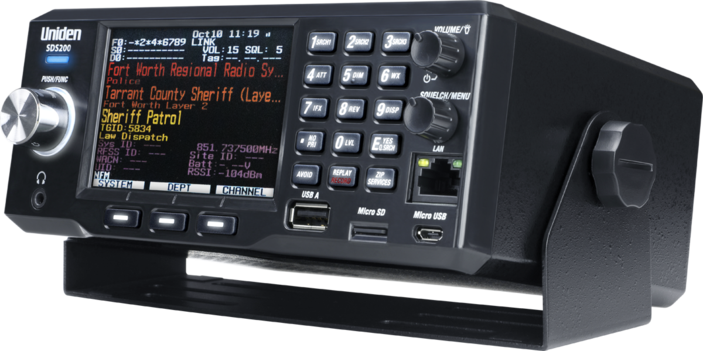
CLICK HERE TO READ OUR DISCLAIMER & TERMS
